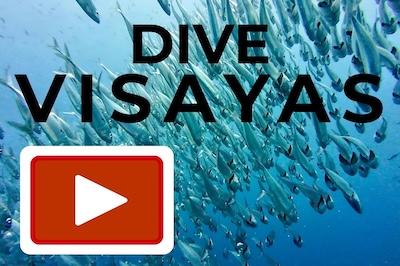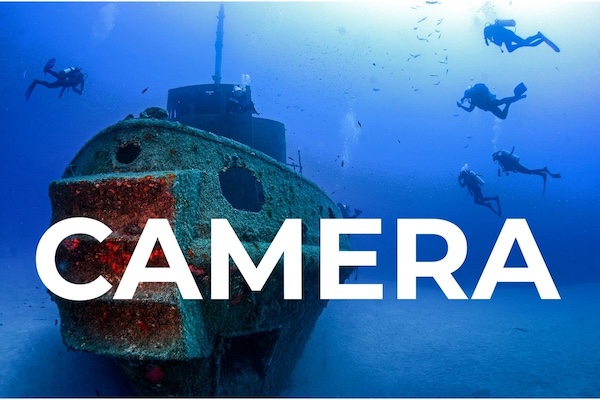










Pamilacan Island: Dive Site - Sanctuary
Video taken: May 2025 | Camera Rig - DJI OSMO Action 4, 2 x 120 degree 5600Lm Video Lights
Underwater Photograhy & Videography: How Water, Light, and Colour Change What You See
Underwater photography and videography are shaped as much by the environment as by the equipment you bring with you. The moment you descend, light bends as it passes through water, colours begin to fade at different depths, and distances don’t look quite the same. These changes all influence how the scene is recorded, regardless of the camera or housing you use.
By understanding how these effects work, you can make conscious adjustments instead of depending only on technology. Knowing how water absorbs certain wavelengths of light and reduces contrast allows you to adapt your settings, framing, and even your choice of when to shoot. This approach helps you capture images that not only look sharper but also more closely reflect the dive itself.
In the next section, we’ll look more closely at the interaction between light and water — why reds fade before other colours, why objects appear nearer than they are, and how those shifts can influence every photo and video you take beneath the surface.
Dive the Visayas Live
Want to see what diving in the central Philippines is really like? On my YouTube channel I post regular clips from sites around Bohol, Leyte, and beyond — showing the reefs, conditions, and marine life as they are, so you know what to expect on your own trip.

Watch real dive footage from sites across the central Visayas on YouTube.
In Focus - Dive Guides & Underwater Images
Explore detailed dive guides alongside real underwater photography and videography. These resources are designed to help you plan routes, understand site conditions, and get a clear picture of what to expect beneath the surface.

Built on personal experience, this hub covers key dive sites, seasonal insights, filming tips, and trusted local knowledge.

We look at real world options and what you need to know.

Light Refraction
The science: Light travels faster in air than in water. When it passes from one medium into the other, it slows down and bends — a process called refraction. It’s the same effect you notice when a straw in a glass looks bent or broken: your eyes are seeing light that has changed direction.
For divers: Refraction happens at the boundary between water and air. Inside your mask, light moves from the water into the air space, bending as it enters. This makes objects appear roughly 33% larger and about 25% closer than they really are, which is why coral heads or fish can look deceptively near.
For cameras: Underwater housings behave in a similar way to a dive mask, but the effect depends on how much air sits between the flat port and the camera lens. A larger air gap bends the light more strongly, which magnifies subjects and reduces the field of view — for example, a 120° lens on land might narrow to around 90° underwater. In compact housings, such as those made for action cameras, the lens sits very close to the port, leaving little air space. This means refraction still occurs, but the loss of FOV is minimal, which is why action cams are popular for wide-angle reef and wreck shots.

How Depth Affects Light and Colour Underwater
The science: As depth increases, water absorbs light unevenly across the spectrum. Longer wavelengths such as red and orange are filtered out first, followed by yellow and green, leaving mainly blue tones at depth. This selective absorption explains why unlit underwater photos and videos often appear flat or washed out.
For divers: The loss of colour begins in just a few metres of water. Without additional lighting or strong sunlight from above, a coral reef that looks vivid at the surface may appear much duller at depth. Recognising how colours shift helps divers understand why scenes look different in person compared to what they expect at the surface.
For cameras: Cameras record these changes exactly as they occur, which is why strobes, video lights, or colour filters are essential for restoring accuracy. Even action cameras benefit from red filters or post-processing adjustments to balance the loss of warm tones. Without these corrections, footage and images tend to lean heavily towards blue-green hues.
The table below shows how different colours are lost as depth increases:
| Depth (m/ft) | Light Lost (%) | Colour Loss | Effect on Visibility |
|---|---|---|---|
| 0m (Surface) | 0% | No colour loss | Full sunlight, all colours visible |
| 5m (16ft) | ~30% | Red disappears | Slight blue/green tint |
| 10m (33ft) | ~50% | Red & orange disappear | Scene looks cooler and dimmer |
| 15m (49ft) | ~60% | Orange fades, yellow starts disappearing | Water appears greenish-blue |
| 20m (66ft) | ~75% | Yellow mostly gone | Blue and green dominate |
| 25m (82ft) | ~80% | Green starts fading | Only shades of blue remain |
| 30m (98ft) | ~85% | Green nearly gone | Everything appears dark blue |
| 35m (115ft) | ~90% | Only deep blue remains | Low visibility without lighting |
| 40m (130ft) | ~95% | Blue tones darken | Very dim, artificial lighting required |

Key Takeaways: Managing Light & Colour
Practical use: Underwater photography and videography can be done with a range of systems — from compact action cameras to advanced mirrorless and DSLR rigs. Each setup can deliver strong results, but all are affected by the same challenges: light bends, colours are absorbed with depth, and image quality is reduced without the right approach. Understanding these limitations, and knowing when to add lighting or filters, is more important than the type of camera you carry.
Refraction: All cameras are influenced by refraction underwater. Wide-angle lenses and action cams with naturally broad fields of view (FOV) tend to reduce the impact, letting you get closer while still keeping your subject in frame. Larger systems with interchangeable lenses may need dome ports to counteract FOV loss and preserve perspective.
Light & colour: The biggest challenge at depth is the progressive loss of light and warm colours. Sensor size helps with gathering light, but no camera can overcome absorption alone. Filters, video lights, and strobes are the only way to restore true colour and avoid flat, blue-heavy results as you descend.
The table below summarises how depth affects light and the adjustments divers can make to improve results:
| Depth (m/ft) | Natural Light Conditions | Recommended Adjustment | Why? |
|---|---|---|---|
| 0–5m (0–16ft) | Good natural light, minor colour loss | No filter or light needed | All colours still visible; ambient light is strong |
| 5–10m (16–33ft) | Red starts to disappear | Use a red filter | Restores warm tones lost at shallow depths |
| 10–20m (33–66ft) | Red & orange mostly gone | Use a red filter or video lights | Filters help in natural light; lights work better in darker areas |
| 20–30m (66–98ft) | Yellow and green fading | Video lights required | Filters are less effective; lighting restores colours more accurately |
| 30m+ (98ft+) | Only blue tones remain | Strong video lights or strobes essential | Natural light is too weak; lighting is the only option |

Conclusions
My approach to underwater photography and videography has been more of an evolution than a revolution. I began with a compact action camera — a DJI Osmo Action 4 in a basic dive case — and quickly learned that with good diving skills and an awareness of how light behaves underwater, it was still possible to capture strong results without filters or lights.
With more experience and hundreds of clips behind me, I’ve since moved on to a simple rig supported by video lights. That single change made a big difference, restoring colour at depth, revealing details in shadowed areas, and allowing subjects to stand out more naturally.
There will always be new techniques and equipment to explore, but the key point remains the same: whatever system you choose, learn how it responds underwater, build your skills around it, and above all — dive safely and enjoy the process.

Frequently Asked Questions
Why do underwater photos and videos look so blue?
As you descend, water absorbs red, orange, and yellow light first, leaving mostly blue and green wavelengths. Without filters or video lights, your camera records only the remaining colours, which makes images look flat or overly blue.
Do I need lights for shallow dives?
In the top 5–10 metres, natural sunlight is usually strong enough, and a red filter can restore warm tones. Once you go deeper, lights become increasingly important to bring back true colour and detail.
How does refraction affect my camera?
Refraction bends light as it moves from water into the air space inside your housing. This makes subjects look larger and closer while reducing the field of view. Action cameras lose very little FOV because their lenses sit close to the port, but larger systems may require dome ports to counteract the effect.
Do I need filters, or should I just use lights?
Filters can help in very specific conditions, like shallow dives in bright, clear water, but their effect is limited. For consistent results, especially below 10–15 metres, video lights or strobes are far more reliable because they restore true colour and detail rather than just shifting tones.
What’s the most important tip for beginners?
Get close to your subject. The less water between you and the subject, the less light is lost and the clearer your images will be. This simple habit improves results with any camera system.

Discover Life in the Philippines
From day-to-day living to the deeper stories that shape the nation, our guides give you an insider’s view of the people, places, and culture across these islands.
Living in the Philippines

Everything you need to build a life in the Philippines.

Learn how to manage your prescriptions as an expat — what to bring, what’s available locally, and how to plan for emergencies.
Filipino Society

Explore what shapes life in the Philippines — from culture and history to family, faith, and the systems that guide daily living.

How power works in the Philippines — from national institutions to barangay halls, and what it means for expats.
Back to Top
